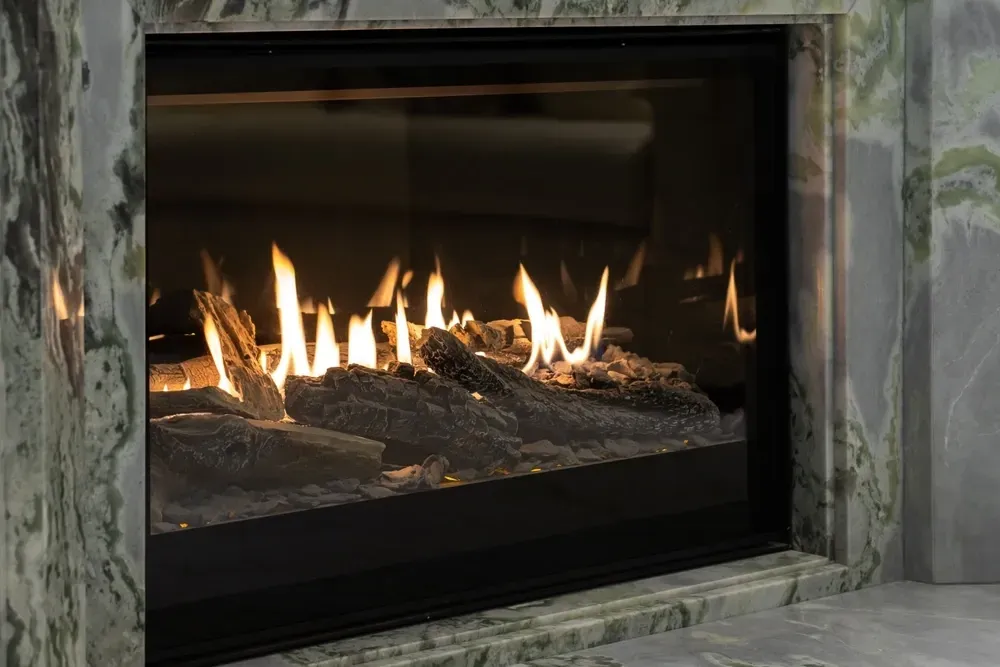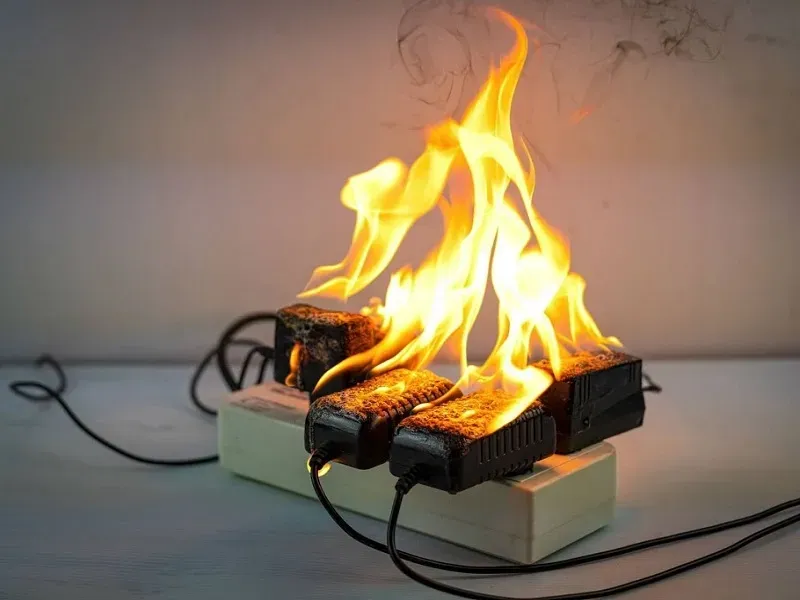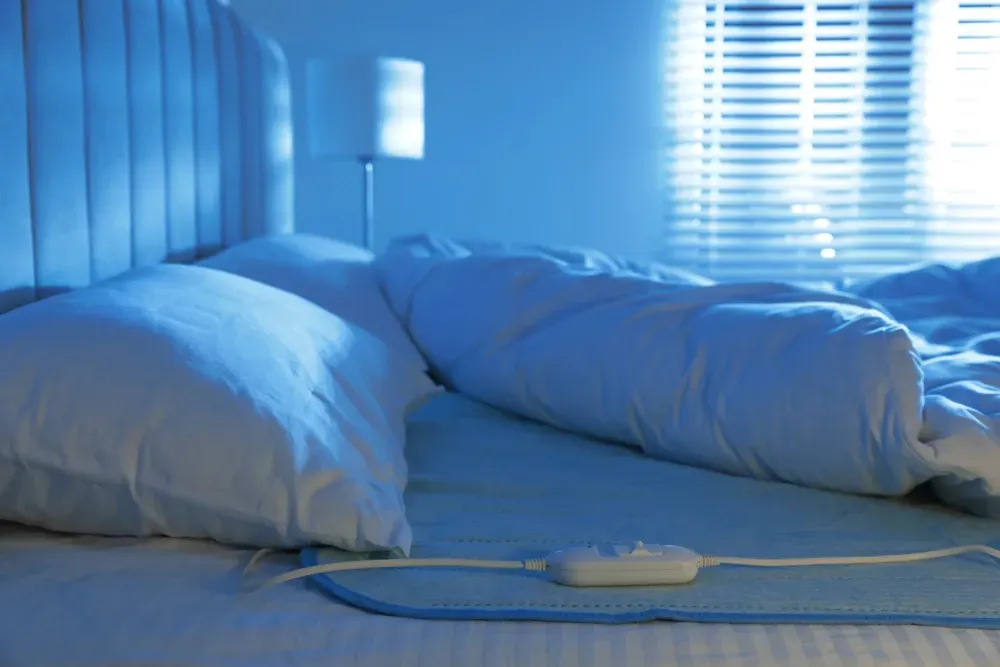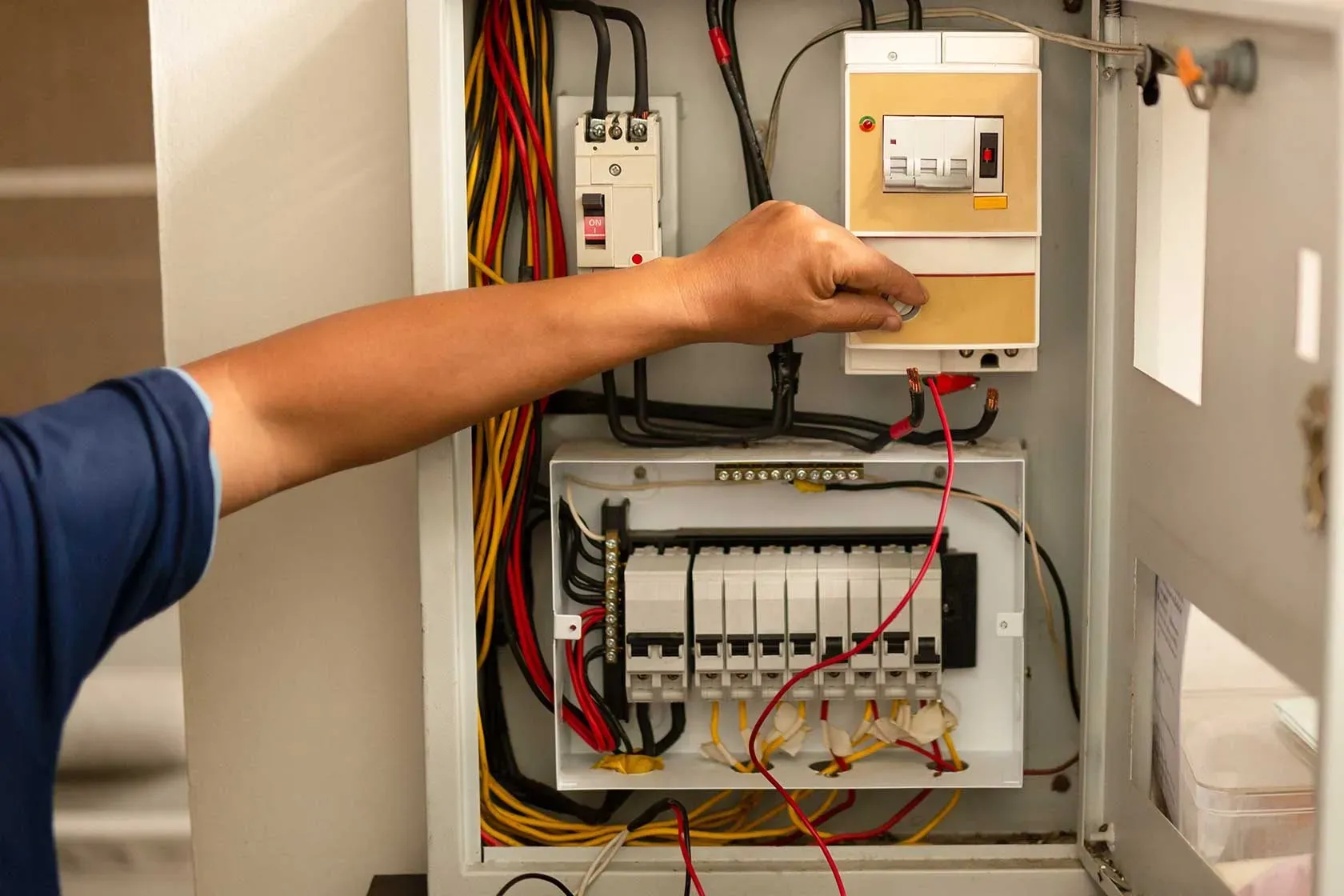Create Cozy Warmth Safely: Expert Fireplace Heater Safety Solutions
Want to enjoy the warmth and ambiance of your fireplace heater without compromising your family's safety? You're making a smart choice by prioritizing fireplace heater safety before installation or operation. At Bee-lectric, we've seen firsthand how improper electrical setup and maintenance can transform a cozy heating solution into a dangerous fire hazard that threatens families and property.
Fireplace heater safety involves much more than simply plugging in a unit and enjoying the warmth. Improper electrical installation, inadequate circuit capacity and failure to follow safety protocols create serious electrical and fire hazards that claim lives and destroy homes annually. The electrical demands of modern fireplace heaters require professional assessment and proper installation to ensure safe, reliable operation.
Understanding fireplace heater safety isn't just about following manufacturer instructions it requires comprehensive electrical knowledge, code compliance and ongoing safety maintenance that protects your investment while ensuring family protection. From proper circuit sizing and GFCI protection to safe placement and regular electrical inspections, every aspect of fireplace heater operation demands attention to electrical safety details.
Fireplace Heater Safety: Professional Electrical Installation Procedures

Understanding fireplace heater safety begins with proper electrical installation procedures that ensure safe operation while meeting current electrical code requirements. Professional electrical setup prevents dangerous conditions while providing reliable power for optimal fireplace heater performance and family safety.
Electrical requirements for safe fireplace heater operation include adequate circuit capacity, proper voltage supply and appropriate electrical protection devices. Most electric fireplace heaters require 1,500 to 2,000 watts of power, translating to 12.5 to 16.7 amps on standard 120-volt circuits. This substantial electrical demand necessitates careful circuit planning and professional installation.
Proper electrical outlet placement follows specific safety guidelines that prevent overheating and fire hazards. Outlets must be positioned at least 12 inches away from fireplace openings while remaining accessible for maintenance and emergency disconnection. Professional placement considers airflow requirements, cord routing safety and electrical code compliance.
Circuit specifications for fireplace heater safety include dedicated circuits sized appropriately for electrical loads. Most installations benefit from dedicated 15 or 20-amp circuits that serve only the fireplace heater, preventing overloading and ensuring reliable operation. Larger units requiring 240-volt power demand specialized circuit installation with appropriate wire gauging.
Electric Fireplace Heater Safety: Installation and Wiring Guidelines
Electric fireplace heater safety requires understanding specific installation and wiring guidelines that ensure proper electrical supply while preventing dangerous conditions. Professional installation addresses voltage requirements, wire specifications and safety clearances that protect families and property from electrical hazards.
Voltage requirements for electric fireplaces vary between 120-volt and 240-volt models, with each requiring specific electrical configurations. Standard plugin models operate on 120 volts and draw up to 1,500 watts, while larger built-in units may require 240-volt hard-wired connections that double heating capacity to approximately 3,000 watts.
Wire gauge specifications must match circuit amperage and electrical load requirements to prevent overheating and fire hazards. Fifteen-amp circuits require 14-gauge wire, while 20-amp circuits need 12-gauge wire. Higher amperage installations demand progressively heavier wire gauges to safely carry electrical current without dangerous heat generation.
Circuit breaker sizing follows National Electrical Code guidelines that require 25% safety margins above calculated loads. A fireplace drawing 12.5 amps requires approximately 15.6 amps of circuit capacity, typically served by a 20-amp breaker to provide adequate safety margin and prevent nuisance tripping.
Safe distance requirements from combustible materials include minimum three-foot clearances around fireplace heaters to prevent ignition of furniture, draperies, or other flammable items. Professional installation considers room layout, traffic patterns and safety clearances to optimize placement while maintaining required safety distances.
Daily Safety: Fireplace Heater Safety Tips for Safe Operation
Implementing daily fireplace heater safety practices ensures ongoing protection while maximizing equipment lifespan and performance. Regular safety procedures identify potential problems before they become dangerous while maintaining optimal operating conditions for safe family enjoyment.
Pre-operation electrical safety checks include visual inspection of cords, plugs and electrical connections for signs of damage, wear, or overheating. Look for frayed wires, loose connections, damaged plugs, or discolored outlets that indicate electrical problems requiring immediate professional attention.
Safe cord and plug inspection procedures involve checking for cracks, burns, or bent prongs that compromise electrical safety. Never use damaged electrical cords or plugs, as these conditions create shock and fire hazards. Replace damaged components immediately or contact professional electricians for safe repair.
Proper device placement and clearance maintenance require ongoing attention to furniture arrangement and storage around fireplace heaters. Maintain minimum three-foot clearances from all combustible materials while ensuring adequate ventilation around air intake and discharge areas for safe operation.
Expert Assessment: Professional Fireplace Heater Electrical Safety Inspection
A professional electrical safety inspection of a fireplace heater looks at all aspects of the electrical system the quality of the installation, and ongoing safety compliance. This keeps families safe and makes sure the equipment works as well as possible. An expert assessment finds hidden dangers and makes sure that safety and code standards are being followed.
Recommendations for inspecting and upgrading electrical panels deal with older systems that may not have the capacity or safety measures needed for modern fireplace heaters. A professional examination finds ways to improve safety and make the electrical system more reliable at the same time. Installing and testing GFCI and AFCI protection makes ensuring that electrical faults are properly protected, which lowers the risk of electrocution and fire. When testing protective devices, professional electricians make sure they work properly to make sure they are safe.
Thermal imaging for electrical connection safety uses high tech diagnostic tools to find hot spots that show loose connections overloaded circuits or stressed components that could start a fire. This exam, which doesn't hurt finds problems that are hidden before they become serious.
Professional electrical testing tools can find electrical faults that can't be seen by eye by giving exact readings of voltage, current, and resistance. Advanced testing makes sure that electrical systems work safely and fulfill performance standards. Insurance companies home transactions and electrical changes sometimes require professional electrical inspections and documentation in order to get coverage. Professional services make sure that all legal and insurance requirements are met and that suitable certification is given.
Code Compliance: Fireplace Heater Safety Standards and Regulations
Knowing the safety standards and rules for fireplace heaters makes sure that installations are lawful and offer the best protection for families and property. Professional compliance takes care of the safety standards, electrical codes, and rules that regulate the installation of fireplaces.
The National Electrical Code (NEC) has rules for fireplace heaters that cover how to install them, how to protect the electrical system, and how to keep people safe while they are using them. Following NEC rules means making sure that circuits are the right size, using GFCI protection where needed, and using installation procedures that keep people safe from electrical risks.
Local building code compliance takes into account regional needs that may be stricter than national standards or include special rules for putting in a fireplace. Professional electricians know how to follow local codes and make sure that all installations are safe.
UL certification and safety standard criteria make sure that fireplace equipment satisfies recognized safety standards by having it tested and certified by an outside party. Check for UL or other well-known testing labs that list products that meet safety and performance criteria.
Professional licensing rules say that only trained electricians with the right training, qualification, and insurance can do complicated electrical work. Licensed professionals make guarantee that the job is done well and safeguard property owners from being held liable.
Through official inspection and approval, electrical permit processes and inspection procedures make sure that installations fulfill code standards. Professional electrical contractors take care of getting permits and making sure that the work fulfills inspection standards for final approval.
Safety Upgrades: Electrical Improvements for Fireplace Heater Safety
Adding electrical modifications makes fireplace heaters safer and makes the system more reliable and efficient. Professional electrical upgrades fix problems with capacity, safety and technology that make homes and families safer.
Upgrading your electrical panel will give your fireplace heaters enough power and make your whole electrical system safer and more reliable. Newer electrical panels have better circuit organization more capacity and more safety measures that meet present and future electrical needs. Installing a dedicated circuit for fireplace heaters takes away the worry of overloading and makes sure that power is always available and equipment works at its best. Dedicated circuits keep the power supply steady and stop other electrical loads and equipment from interfering with it.
Trust Bee-lectric: Complete Fireplace Heater Safety Solutions
At Bee-lectric our experienced fireplace heater electrical installation services make sure that everything is up to code and that the heater will work safely and reliably for years to come.Our qualified electricians have the knowledge and tools to perform all areas of fireplace electrical installation from the first consultation to regular maintenance.
Electrical safety inspection and code compliance certification services make sure that installations meet current safety requirements and give you the paperwork you need to follow the law and get insurance. Our thorough examinations find any risks while making sure that your electrical system works as well as possible and is safe.
Emergency electrical services for fireplace safety concerns respond right away to dangerous electrical situations including overheating electrical arcing or system failures that put safety at risk. We are available 24/7 for emergencies so you can count on a quick expert response when you need it.
Conclusion
The safety of a fireplace heater depends on having the right electrical work done keeping it up to date and having professionals who know how to do it right so that families may be warm and comfortable without putting themselves at risk. Homeowners may make smart choices and know when they need to hire a professional electrician if they know what electrical regulations safety procedures, and code compliance are.
Frequently Asked Questions
Q: Can I install an electric fireplace heater myself, or do I need a professional electrician?
A: While plug-in models may seem simple, professional installation ensures proper circuit capacity, outlet placement and code compliance. Hard-wired installations always require licensed electricians for safety and legal compliance.
Q: What electrical requirements do I need to consider for fireplace heater safety?
A: Consider circuit capacity (typically 15-20 amps), proper voltage (120V or 240V), GFCI protection where required, adequate wire gauge and safe outlet placement at least 12 inches from the fireplace opening.
Q: How much does professional fireplace heater electrical installation typically cost? A: Costs vary from $200-$500 for basic outlet installation to $1,000-$2,500 for dedicated circuit installation or electrical panel upgrades, depending on complexity and local electrical requirements.
Q: What are the warning signs that my fireplace heater has electrical problems?
A: Watch for burning smells, warm outlets or plugs, frequent breaker trips, flickering lights, unusual sounds, or visible damage to cords and connections. These symptoms require immediate professional attention.
Q: How often should I have my fireplace heater electrical system professionally inspected?
A: Annual electrical inspections are recommended for fireplace systems, with monthly GFCI testing and immediate professional assessment if any problems or warning signs develop during operation.



